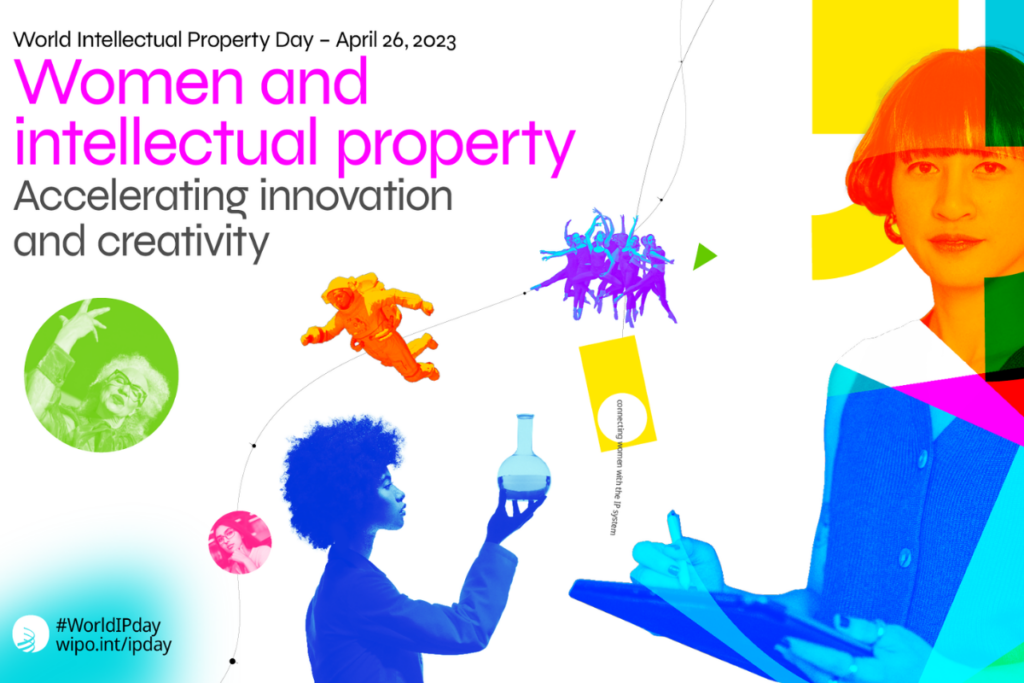In honor of World IP Day, we celebrate innovators who shaped the world
World IP Day’s 2023 theme celebrates the can-do attitude and groundbreaking work of women inventors, creators, and entrepreneurs around the world. Throughout history, women innovators helped build a better world with their inventions while facing limited resources and obstacles, and yet these heroes are often left unnoticed. In this blog, we celebrate the achievements of six women who shaped the world with their imagination, dedication, and perseverance.
Dr. Patricia Bath – The Laserphaco Probe
Dr. Patricia Era Bath was born on November 4, 1942, in Harlem, New York. When she was 16, she was one of a few students to attend a cancer research workshop sponsored by the National Science Foundation. Later, she pursued an ophthalmology fellowship at Columbia University, during which she discovered that African Americans were twice as likely to suffer from blindness and eight times more likely to develop glaucoma.
In 1981, Bath began working on her most famous invention, the Laserphaco Probe, a less painful and more precise treatment of cataracts. After her innovation was patented in 1988, she became the first African American female doctor to receive a patent for a medical purpose. By 2000, her Laserphaco probe method was being used throughout the world to treat cataracts.
Dr. Bath’s impact on the medical community grew significantly around the globe through her humanitarian efforts. She commented, “It is my hope that my sharing my views, experiences, and recommendations that other women inventors will keep the faith, not give up, and pursue their intellectual property goals with renewed vigor.”
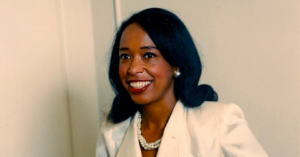
Dr. Patricia Bath shared her research at conferences and events all over the world. (Photo source: Eraka Bath)
Melitta Bentz – Coffee Paper Filter
Melitta Bentz was an inventor and entrepreneur born in 1873 in Dresden, Germany. She was raised by entrepreneurs: she was the daughter of a bookseller, and her grandparents owned a brewery.
In the early 1900s, coffee wasn’t typically brewed by pouring fine coffee powder into hot water and waiting for the powder to settle at the bottom of the pot. However, this method resulted in coffee particles floating back to the top of the cup.
Through experimentation and trial and error in her kitchen, Bentz used paper from her son’s book to develop a filter, which was a revolution in coffee making. She called this “perfect coffee enjoyment” and tested her new experiment by hosting “coffee afternoons” with friends.
In 1908, she registered her coffee filter with the patent office and started her business with her husband in their apartment in Dresden. Today, the Melitta Group has more than 5,000 employees around the world.
Melitta Bentz (Photo Source: A Woman’s Bridge) /
Melitta coffee filter: drawing from patent document DE 653796A (1937)
Margaret Knight – Flat-Bottomed Paper Bags
Margaret Knight was born in 1838 in York, Maine, and was a self-taught engineer. She had some secondary education but no further education after that. She had a passion and interest in tools and mechanical things.
At the age of 12, she was forced to work in a cotton mill to help support her family and saw many accidents caused by faulty looms, which inspired her first invention. She developed a safety device - a shuttle restraint system - which ended up being used in many mills. From there she went on to develop many other technical innovations.
While working in a paper bag plant, she believed a flat-bottom bag would make it easier to pack items. Using her strengths in engineering, she developed a machine to produce flat-bottomed paper bags by automating the folding and gluing of the bottoms. A man tried to steal her idea, but she prevailed in the patent court. She founded the Eastern Paper Bag Company in Hartford, CT. In 2006, Knight was posthumously added to the National Inventors Hall of Fame.
Margaret Knight (Photo Source: AI Bees) /
Margaret Flat-Bottomed Paper Bags
Dr. Lin Lanying – Synthesis of Crystals and Semiconductor Materials
Dr. Lin Lanying was born in 1918 in Putian, China. Her family didn’t believe education was important for girls and she wasn’t permitted to attend school, but despite her family’s objections, she eventually went on to receive a degree in physics from Fukien Christian University. She also received a bachelor’s degree in mathematics from Dickinson University and a Ph.D. in physics from the University of Pennsylvania in 1955.
After Dr. Lin obtained her Ph.D., she returned to China and became a researcher at the Semiconductor Research Institute of the Chinese Academy of Sciences. Dr. Lin and her team synthesized crystals of aerospace and semiconductor materials, including China’s first mono-crystals of silicon and gallium arsenide. Today, she is recognized as the "mother of aerospace materials" and the "mother of semiconductor materials" in China.
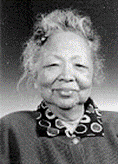
Dr. Lin Lanying (Photo Source: China Vitae)
Dr. Katsuko Saruhashi – Saruhashi's Table
Dr. Katsuko Saruhashi was born in Tokyo in 1920. She earned a degree in chemistry from the Imperial Women's College of Science in 1943 and was the first woman to receive a Ph.D. in chemistry from the University of Tokyo in 1957. She went on to work at the Meteorological Research Institute, and it was there she invented a new way to measure the amount of carbon in the ocean, which became known as Saruhashi’s Table.
One of Dr. Saruhashi’s other major achievements was the study of the radioactive isotopes produced in a nuclear blast. She studied the concentration of these radioactive isotopes in rainfall, dust, and the ocean around Tokyo after nuclear testing occurred in the Pacific Ocean. She was the first woman elected to the Science Council of Japan and the first woman to win the Miyake Prize for geochemistry in 1985.
In a 2009 biography, she commented, “I worked hard … I concentrated entirely on learning how to do science ... But that was not an effort I made as a woman to compete against men. I knew that by working hard, I could slowly unwrap the secrets of nature … this was such a joy … the sheer joy I enjoyed as a researcher.”
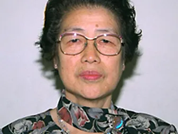
Dr. Katsuko Saruhashi Photo Source: WowStem
Anna Modayi Mani – Instruments to Measure the Weather
Anna Modayil Mani was born in 1918 in the southern part of India, now part of the state of Kerala, and her father was an engineer who owned cardamom estates. She was supposed to marry but was more interested in studying, and instead, she decided to study physics and enrolled in the honors program at the Presidency College in Madras.
Mani began her research career at the Indian Institute of Science in Bengaluru. In 1948, she joined the Indian Meteorological Department where she was responsible for the construction of radiation instruments. In 1953, Mani became Deputy Director General of the Indian Meteorological Department. Mani created drawings for nearly 100 different weather instruments and started their production. She also set up a network of weather monitoring stations in India to measure solar radiation and help harness solar energy.
Mani authored two books on solar radiation and published several papers on topics that ranged from atmospheric ozone to the need for international instrument comparisons. One of her mottos was, “Wrong measurements are worse than no measurements at all.”
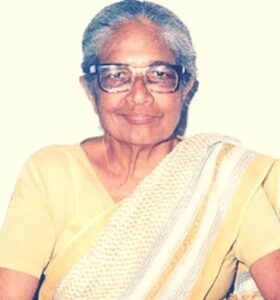
Anna Modayi Mani (Photo Source: Science The Wire)
Celebrating Women Innovators: Past, Present and Future
These are just a few women around the globe that have changed our lives through their innovations and scientific breakthroughs, and as new challenges arise, women will continue to develop innovative solutions to address these challenges. Women are, and have always been, essential to innovation.
Anaqua’s mission is to empower our clients to develop and secure the world’s most influential and innovative ideas. Learn more about how two women who are Anaqua’s clients are advancing intellectual property and innovation:
- Sangeeta Shah, CEO of Brooks Kushman - Diversity and Differentiation in Law Firms
- Tove Fabritius de Tengnagel, Project Manager at Corporate Patents, Novo Nordisk – Driving Change in Pharma IP Management
Additional Articles You May Like:
Sources:
- Interesting Engineering, The Marginalian, and She Thought It
- Biography.com and Sights on the prize | USPTO
- German Patent and Trademark Offices, NYTimes: Overlooked No More, and A Woman’s Source
- National Inventors Hall of Fame, and AI Bees
- Wall of Scientists and China Vitae
- Dr. Katsuko Saruhashi: Geochemistry for a Better Future (wowstem.org)
- Science the Wire
